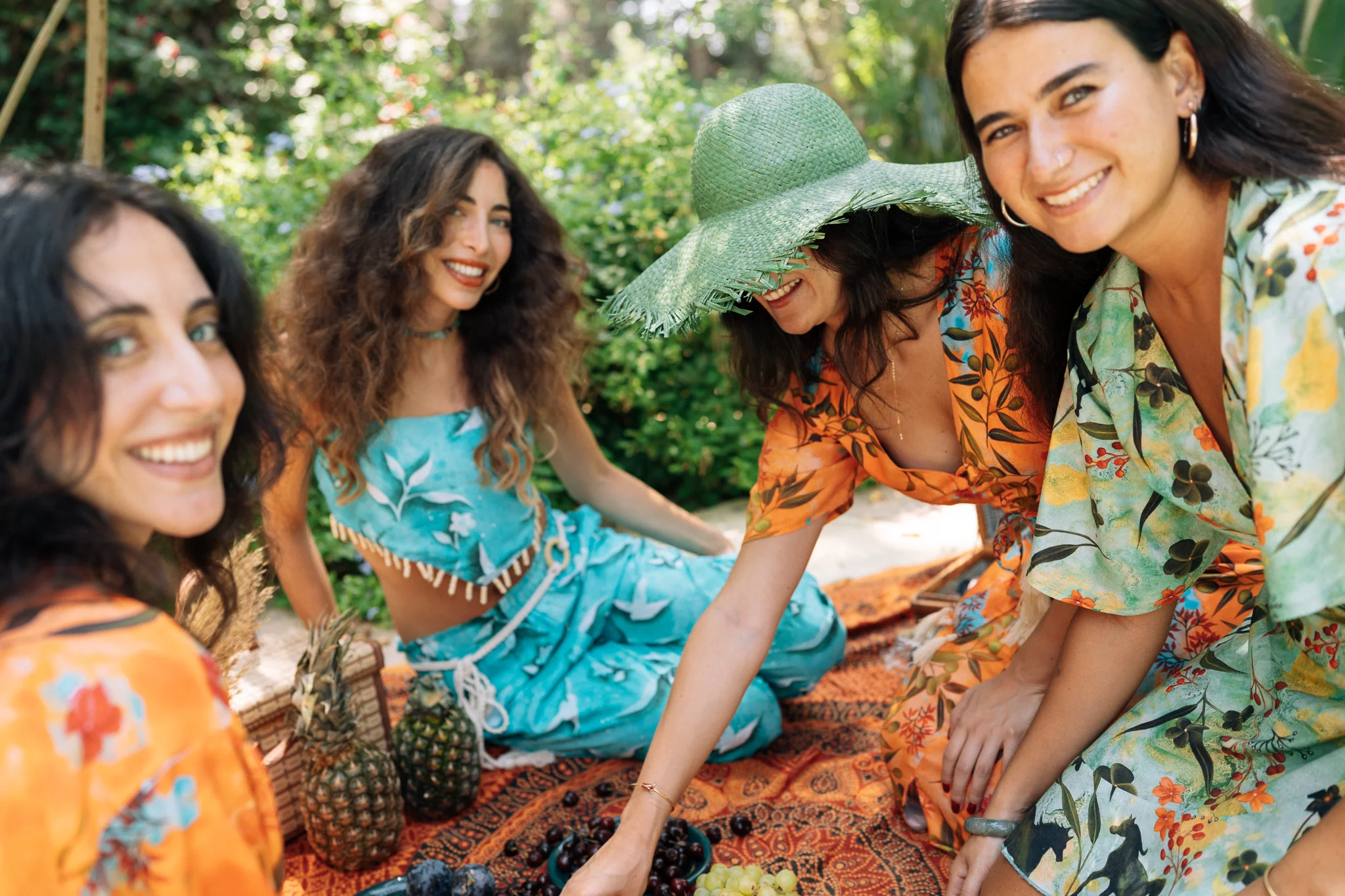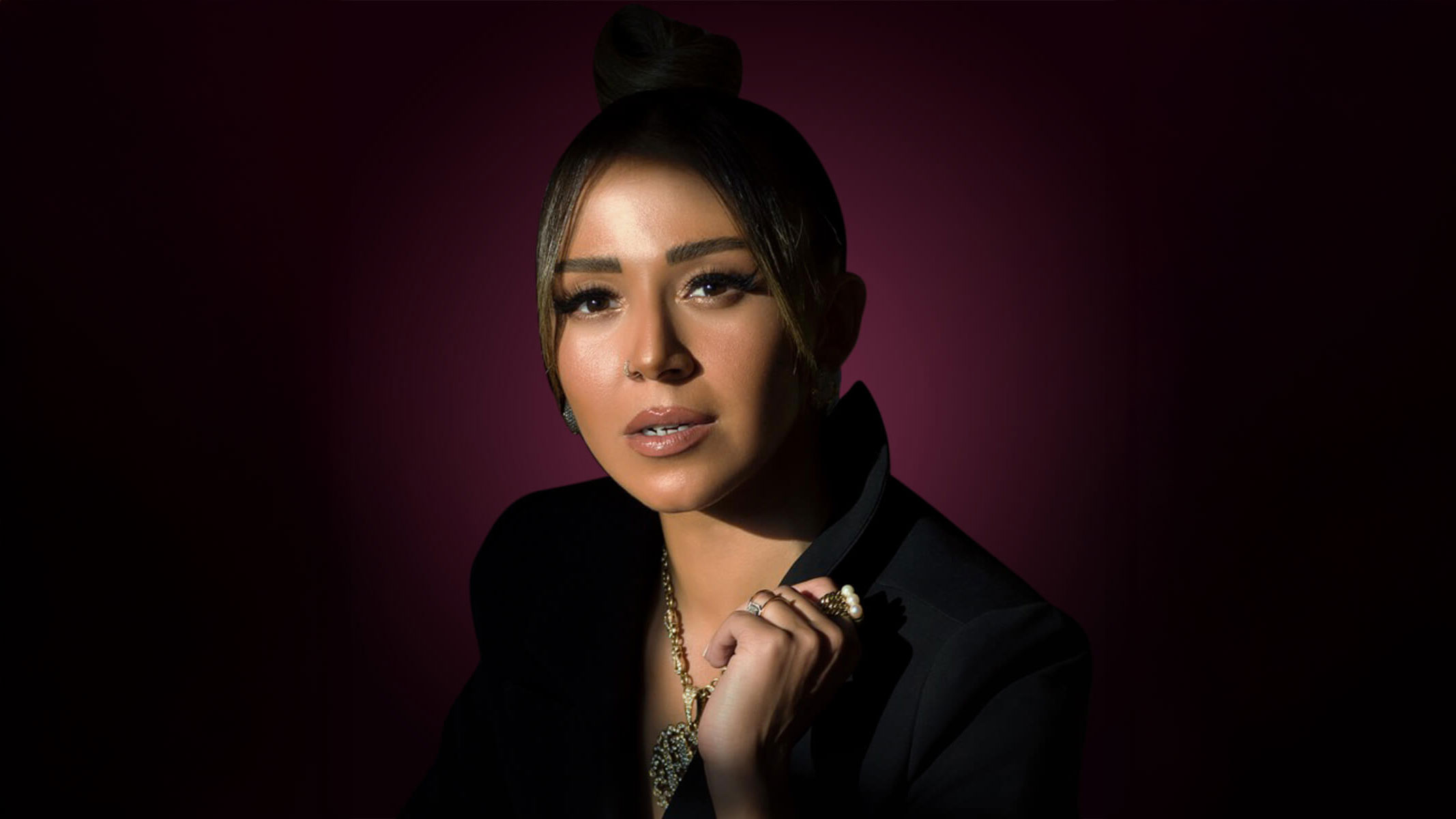In Cairo, rebellion rarely looks loud. Sometimes, it looks like a woman walking down a crowded street in a linen suit the color of dust, head held high, moving as if she owns the noise. That quiet defiance — that mix of softness and strength — is what Farah El Ashiry has built her brand, FUFA, upon.
When Farah launched FUFA in 2018, she wasn’t trying to build a fashion empire. She was trying to make clothes that felt like home — not the nostalgic home of postcards, but the real one: imperfect, loud, endlessly creative.
Her first collection was shot in Downtown Cairo, among cracked facades and flickering lights, using friends instead of models. The garments were tailored yet lived-in, elegant yet disobedient — like the city itself.
“I wanted to design for Cairo women,” she says. “Women who work, hustle, protest, fall in love, and still look powerful doing it.”
1. From Chaos Comes Clarity
Farah’s studio sits in a sunlit apartment in Zamalek, its walls lined with fabric rolls, Polaroids, and unfinished sketches. Outside, traffic hums like a metronome. Inside, everything feels deliberate — clean lines, raw textures, neutral tones.
Born and raised in Cairo, Farah studied business before turning to design. “It wasn’t rebellion,” she says, “it was inevitability.” She describes Cairo not as a muse but as a collaborator — “She interrupts you, challenges you, inspires you, frustrates you. That’s what creativity needs.”
FUFA’s early collections stood out not because they followed global trends but because they ignored them. Cropped blazers, deconstructed abayas, structured silhouettes softened by drape — each piece felt like a statement of identity rather than fashion.
“Egyptian women don’t need permission to be seen,” Farah says. “They need clothes that keep up with them.”
2. The Cairo Girl
FUFA’s aesthetic is grounded in Cairo’s contradictions — minimal yet dramatic, grounded yet flamboyant. A typical FUFA look might pair oversized trousers with gold earrings shaped like ancient amulets, or a blazer made from raw cotton embroidered with tiny Arabic phrases.
Her campaigns don’t feature retouched supermodels. They feature real women — photographers, activists, musicians — often shot under Cairo’s harsh sun, their hair undone, their eyes defiant.
“Cairo women are born with attitude,” says Marianne Eissa, a model and friend who’s been part of FUFA since day one. “Farah doesn’t dress us to impress. She dresses us to remember who we are.”
That sense of identity made FUFA a social phenomenon. Cairo’s creative crowd — stylists, filmmakers, and architects — embraced the brand as a statement of modern Egyptian cool: authentic, intelligent, quietly powerful.
3. Beyond Fashion
What sets FUFA apart isn’t just its design — it’s the conversation it started. Farah uses her collections to speak about belonging, womanhood, and the duality of modern Egypt.
Her 2022 collection, “Born on a Monday,” drew inspiration from Cairo’s working women — the teachers, designers, and bakers who shape the city’s rhythm. The campaign featured women photographed at work, wearing FUFA pieces like armor.
In 2023, her line “No Instructions” flipped the concept of modesty. “I wanted to prove that modest fashion can be bold,” she explains. “It’s not about covering; it’s about owning how you choose to be seen.”
“Fashion in Egypt isn’t about trends,” she adds. “It’s about translation — how you express who you are in a city that never stops questioning you.”
4. The Rise of Cairo’s Creative Wave
Farah is part of a growing generation of Egyptian designers redefining the region’s creative identity. Alongside names like Okhtein, Sabry Marouf, Temraza, and Ahmed Hamdy, she represents a shift — from imitation to innovation.
FUFA has shown in Cairo Fashion Experience with Camera Nazionale della Moda Italiana, appeared in Vogue Arabia, and collaborated with Egyptian photographers like Nour El Refai and Farida Khamis. But despite international attention, Farah keeps her focus local.
“I’m not trying to make Cairo global,” she says. “I’m trying to make the world notice that Cairo already is.”
In her studio, she hires young female designers, trains them herself, and encourages them to start their own lines. “We need an ecosystem,” she says. “Not competition — community.”
5. Street Realities, Luxury Intentions
FUFA sits at the intersection of streetwear and luxury — garments that move between morning meetings and midnight parties. Prices are aspirational but not exclusionary; her clients range from young professionals to women in their 50s rediscovering their personal style.
Each piece is locally produced in small runs. “It’s not sustainability for the sake of marketing,” Farah clarifies. “It’s about respect — for fabric, for craft, for people’s time.”
Her team often sources textiles from Egyptian mills in Mahalla and Asyut, reviving forgotten cotton traditions. “Egypt built its economy on fabric,” she says. “We’re just reweaving the story.”
6. What FUFA Represents
For Cairo’s creative scene, FUFA isn’t just a label — it’s a language.
Her clothes speak to a generation raised between worlds — global yet local, digital yet tactile, progressive yet deeply rooted in place.
Farah herself is part of a quiet movement led by women reclaiming their narratives — Reem El Adl, Mona Zaki, Nadine Labaki, Mariam Naoum — all using art as rebellion.
“We grew up being told to be small,” she says. “Now we’re designing space for ourselves.”
Her words feel less like ambition and more like prophecy. Cairo, with all its contradictions, has finally found a fashion voice that looks and sounds like itself — imperfect, resilient, magnetic.
7. The Future in Thread
Farah’s upcoming collection explores “the absence of noise.”
“I’m trying to design silence,” she laughs. “Not literally — but a kind of peace. We’ve lived so long in reaction; I want to create clothes that feel like stillness.”
In her sketchbook, there’s a note scribbled in pen: ‘Soft doesn’t mean weak.’ It’s become her mantra.
As we speak, sunlight hits a rack of unfinished garments — pale cotton, sharp cuts, delicate embroidery of Arabic words for strength: Sabr. Nour. Amal. Patience. Light. Hope.
Cairo hums outside, as it always does. Inside, Farah sews rebellion into fabric — quietly, gracefully, endlessly.




